- Description
- Additional Information
- Brand
- How To Use
- Product Details
- Side Effects
- Ingredients
- How to Store
- Patient Information leaflet
- Reviews (0)
- Questions & Answers
Forxiga 5mg Tablets – Dapagliflozin 5mg, 28 Tablets
Forxiga 10mg Tablets are a revolutionary new treatment for Type 2 diabetes, heart failure, and chronic kidney disease. Forxiga works by helping the body to get rid of excess sugar through the urine, which helps to lower blood sugar levels. Forxiga is the first in a new class of drugs called SGLT2 inhibitors, which are a major breakthrough in the treatment of diabetes. Forxiga is taken orally, once daily with or without food. The most common side effects with Forxiga are genital infections and urinary tract infections. Forxiga is a highly effective treatment for Type 2 diabetes and is an important new option for people with this condition.
Forxiga 10mg contains the active substance dapagliflozin
What Forxiga is used for:
Forxiga is used to treat:
- Type 2 diabetes
- in adults and children aged 10 years and older.
- if your type 2 diabetes cannot be controlled with diet and exercise.
- Forxiga can be used on its own or together with other medicines to treat diabetes.
- It is important to continue to follow the advice on diet and exercise given to you by your doctor, pharmacist or nurse.
- Heart failure
- in adults (aged 18 years and older) with symptoms due to a weak pump function of the heart.
- Chronic kidney disease
- in adults with reduced kidney function.
What is type 2 diabetes and how does Forxiga help?
- In type 2 diabetes your body does not make enough insulin or is not able to use the insulin it makes properly. This leads to a high level of sugar in your blood. This can lead to serious problems like heart or kidney disease, blindness, and poor circulation in your arms and legs.
- Forxiga works by removing excess sugar from your body. It can also help prevent heart disease.
What is heart failure and how does Forxiga 5mg help?
- This type of heart failure occurs when the heart is weak and cannot pump enough blood to the lungs and the rest of the body. This can lead to serious medical problems and need for hospital care.
- The most common symptoms of heart failure are feeling breathless, feeling tired or very tired all the time, and ankle swelling.
- Forxiga helps protect your heart from getting weaker and improves your symptoms. It can lower the need to go to hospital and can help some patients to live longer.
What is chronic kidney disease and how does Forxiga help?
- When you have chronic kidney disease, your kidneys may gradually lose their function. This means they would not be able to clean and filter your blood the way they should. Loss of kidney function can lead to serious medical problems and need for hospital care.
- Forxiga helps protect your kidneys from losing their function. That can help some patients to live longer.
Forxiga 5mg Tablets Reviews
After using Forxiga 5mg Tablets, it’s helpful to let others know about your experience. Reviews of an item help other users know that medicines received have helped the condition it is claimed for, how well the treatment worked or any issues to be aware of. We invite our users to leave a review of both their treatment and of the service provided. Click on the reviews tab to see if there has been feedback on this item.
What is the price of Forxiga 5mg Tablets?
The price of Forxiga 5mg Tablets is £51.45
Where can you buy Forxiga 5mg Tablets?
You can buy Forxiga 5mg Tablets at Dock Pharmacy Essex UK, UK Online Pharmacy.
Can you buy Forxiga 5mg Tablets Over the counter?
Forxiga 5mg Tablets is not available to buy over the counter. You need a prescription to buy Forxiga 5mg Tablets
| Brand | |
|---|---|
Brand
FORXIGA
How To Use
How to take Forxiga
Always take this medicine exactly as your doctor has told you. Check with your doctor, pharmacist or nurse if you are not sure.
How much to take
- The recommended dose is one 10 mg tablet each day.
- Your doctor may start you on a 5 mg dose if you have a liver problem.
- Your doctor will prescribe the strength that is right for you.
Taking this medicine
- Swallow the tablet whole with half a glass of water.
- You can take your tablet with or without food.
- You can take the tablet at any time of the day. However, try to take it at the same time each day. This will help you to remember to take it.
Your doctor may prescribe Forxiga together with other medicine(s). Remember to take these other medicine(s) as your doctor has told you. This will help get the best results for your health.
Diet and exercise can help your body use its blood sugar better. If you have diabetes, it is important to stay on any diet and exercise program recommended by your doctor while taking Forxiga.
If you take more Forxiga than you should
If you take more Forxiga tablets than you should, talk to a doctor or go to a hospital immediately. Take the medicine pack with you.
If you forget to take Forxiga
What to do if you forget to take a tablet depends on how long it is until your next dose.
- If it is 12 hours or more until your next dose, take a dose of Forxiga as soon as you remember. Then take your next dose at the usual time.
- If it is less than 12 hours until your next dose, skip the missed dose. Then take your next dose at the usual time.
- Do not take a double dose of Forxiga to make up for a forgotten dose.
If you stop taking Forxiga
Do not stop taking Forxiga without talking to your doctor first. If you have diabetes, your blood sugar may increase without this medicine.
If you have any further questions on the use of this medicine, ask your doctor, pharmacist or nurse.
Product Details
What you need to know before you take Forxiga
Do not take Forxiga
- if you are allergic to dapagliflozin or any of the other ingredients of this medicine (listed in section 6).
Warnings and precautions
Contact a doctor or the nearest hospital straight away:
Diabetic ketoacidosis:
- If you have diabetes and experience feeling sick or being sick, stomach pain, excessive thirst, fast and deep breathing, confusion, unusual sleepiness or tiredness, a sweet smell to your breath, a sweet or metallic taste in your mouth, or a different odour to your urine or sweat or rapid weight loss.
- The above symptoms could be a sign of “diabetic ketoacidosis” – a rare but serious, sometimes life-threatening problem you can get with diabetes because of increased levels of “ketone bodies” in your urine or blood, seen in tests.
- The risk of developing diabetic ketoacidosis may be increased with prolonged fasting, excessive alcohol consumption, dehydration, sudden reductions in insulin dose, or a higher need of insulin due to major surgery or serious illness.
- When you are treated with Forxiga, diabetic ketoacidosis can occur even if your blood sugar is normal.
If you suspect you have diabetic ketoacidosis, contact a doctor or the nearest hospital straight away and do not take this medicine.
Necrotising fasciitis of the perineum:
- Talk to your doctor immediately if you develop a combination of symptoms of pain, tenderness, redness, or swelling of the genitals or the area between the genitals and the anus with fever or feeling generally unwell. These symptoms could be a sign of a rare but serious or even life-threatening infection, called necrotising fasciitis of the perineum or Fournier’s gangrene which destroys the tissue under the skin. Fournier’s gangrene has to be treated immediately.
Talk to your doctor, pharmacist or nurse before taking Forxiga:
- if you have “type 1 diabetes” – the type that usually starts when you are young, and your body does not produce any insulin.
- if you have diabetes and have a kidney problem – your doctor may ask you to take additional or a different medicine to control your blood sugar.
- if you have a liver problem – your doctor may start you on a lower dose.
- if you are on medicines to lower your blood pressure (anti-hypertensives) and have a history of low blood pressure (hypotension). More information is given below under ‘Other medicines and Forxiga’.
- if you have very high levels of sugar in your blood which may make you dehydrated (lose too much body fluid). Possible signs of dehydration are listed in section 4. Tell your doctor before you start taking Forxiga if you have any of these signs.
- if you have or develop nausea (feeling sick), vomiting or fever or if you are not able to eat or drink. These conditions can cause dehydration. Your doctor may ask you to stop taking Forxiga until you recover to prevent dehydration.
- if you often get infections of the urinary tract.
If any of the above applies to you (or you are not sure), talk to your doctor, pharmacist or nurse before taking Forxiga.
Diabetes and foot care
If you have diabetes, it is important to check your feet regularly and adhere to any other advice regarding foot care given by your health care professional.
Urine glucose
Because of how Forxiga works, your urine will test positive for sugar while you are on this medicine.
Children and adolescents
Forxiga can be used in children aged 10 years and older for the treatment of type 2 diabetes. No data are available in children below 10 years of age.
Forxiga is not recommended for children and adolescents under 18 years of age for the treatment of heart failure or for the treatment of chronic kidney disease, because it has not been studied in these patients.
Other medicines and Forxiga
Tell your doctor, pharmacist or nurse if you are taking, have recently taken or might take any other medicines.
Especially tell your doctor:
- if you are taking a medicine used to remove water from the body (diuretic).
- if you are taking other medicines that lower the amount of sugar in your blood such as insulin or a “sulphonylurea” medicine. Your doctor may want to lower the dose of these other medicines, to prevent you from getting low blood sugar levels (hypoglycaemia).
Pregnancy and breast-feeding
If you are pregnant or breast-feeding, think you may be pregnant or are planning to have a baby, ask your doctor or pharmacist for advice before taking this medicine. You should stop taking this medicine if you become pregnant, since it is not recommended during the second and third trimesters of pregnancy. Talk to your doctor about the best way to control your blood sugar while you are pregnant.
Talk to your doctor if you would like to or are breast-feeding before taking this medicine. Do not use Forxiga if you are breast-feeding. It is not known if this medicine passes into human breast milk.
Driving and using machines
Forxiga has no or negligible influence on the ability to drive and use machines.
Taking this medicine with other medicines called sulphonylureas or with insulin can cause too low blood sugar levels (hypoglycaemia), which may cause symptoms such as shaking, sweating and change in vision, and may affect your ability to drive and use machines.
Do not drive or use any tools or machines, if you feel dizzy taking Forxiga.
Forxiga contains lactose
Forxiga contains lactose (milk sugar). If you have been told by your doctor that you have an intolerance to some sugars, contact your doctor before taking this medicine.
Side Effects
Possible side effects
Like all medicines, this medicine can cause side effects, although not everybody gets them.
Contact a doctor or the nearest hospital straight away if you have any of the following side effects:
- angioedema, seen very rarely (may affect up to 1 in 10,000 people).
These are signs of angioedema:- swelling of the face, tongue or throat
- difficulties swallowing
- hives and breathing problems
- diabetic ketoacidosis – this is rare in patients with type 2 diabetes (may affect up to 1 in 1,000 people).
These are the signs of diabetic ketoacidosis (see also section 2 Warnings and precautions):- increased levels of “ketone bodies” in your urine or blood
- feeling sick or being sick
- stomach pain
- excessive thirst
- fast and deep breathing
- confusion
- unusual sleepiness or tiredness
- a sweet smell to your breath, a sweet or metallic taste in your mouth or a different odour to your urine or sweat
- rapid weight loss.
This may occur regardless of blood sugar level. Your doctor may decide to temporarily or permanently stop your treatment with Forxiga.
- necrotising fasciitis of the perineum or Fournier’s gangrene, a serious soft tissue infection of the genitals or the area between the genitals and the anus, seen very rarely.
Stop taking Forxiga and see a doctor as soon as possible if you notice any of the following serious side effects:
- urinary tract infection, seen commonly (may affect up to 1 in 10 people).
These are signs of a severe infection of the urinary tract:- fever and/or chills
- burning sensation when passing water (urinating)
- pain in your back or side.
Although uncommon, if you see blood in your urine, tell your doctor immediately.
Contact your doctor as soon as possible if you have any of the following side effects:
- low blood sugar levels (hypoglycaemia), seen very commonly (may affect more than 1 in 10 people) in patients with diabetes taking this medicine with a sulphonylurea or insulin.
These are the signs of low blood sugar:- shaking, sweating, feeling very anxious, fast heart beat
- feeling hungry, headache, change in vision
- a change in your mood or feeling confused.
Your doctor will tell you how to treat low blood sugar levels and what to do if you get any of the signs above.
Other side effects when taking Forxiga:
Common
- genital infection (thrush) of your penis or vagina (signs may include irritation, itching, unusual discharge or odour)
- back pain
- passing more water (urine) than usual or needing to pass water more often
- changes in the amount of cholesterol or fats in your blood (shown in tests)
- increases in the amount of red blood cells in your blood (shown in tests)
- decreases in creatinine renal clearance (shown in tests) in the beginning of treatment
- dizziness
- rash
Uncommon (may affect up to 1 in 100 people)
- loss of too much fluid from your body (dehydration, signs may include very dry or sticky mouth, passing little or no urine or fast heartbeat)
- thirst
- constipation
- awakening from sleep at night to pass urine
- dry mouth
- weight decreased
- increases in creatinine (shown in laboratory blood tests) in the beginning of treatment
- increases in urea (shown in laboratory blood tests)
Reporting of side effects
If you get any side effects, talk to your doctor, pharmacist or nurse. This includes any possible side effects not listed in this leaflet. You can also report side effects directly via the Yellow Card Scheme Website: www.mhra.gov.uk/yellowcard or search for MHRA Yellow Card in the Google Play or Apple App Store. By reporting side effects you can help provide more information on the safety of this medicine.
Ingredients
What Forxiga contains
- The active substance is dapagliflozin.
Each Forxiga 5 mg film-coated tablet (tablet) contains dapagliflozin propanediol monohydrate equivalent to 5 mg dapagliflozin.
Each Forxiga 10 mg film-coated tablet (tablet) contains dapagliflozin propanediol monohydrate equivalent to 10 mg dapagliflozin. - The other ingredients are:
- tablet core: microcrystalline cellulose (E460i), lactose (see section 2 ‘Forxiga contains lactose’), crospovidone (E1202), silicon dioxide (E551), magnesium stearate (E470b).
- film-coating: polyvinyl alcohol (E1203), titanium dioxide (E171), macrogol 3350 (E1521), talc (E553b), yellow iron oxide (E172).
How to Store
How to store Forxiga
Keep this medicine out of the sight and reach of children.
Do not use this medicine after the expiry date, which is stated on the blister or carton after ‘EXP’. The expiry date refers to the last day of that month.
This medicine does not require any special storage conditions.
Do not throw away any medicines via wastewater or household waste. Ask your pharmacist how to throw away medicines you no longer use. These measures will help to protect the environment.
Patient Information leaflet
Click here for the Patient Information leaflet
Please read before using the product
Only logged in customers who have purchased this product may leave a review.
Questions and answers of the customers
There are no questions yet, be the first to ask something for this product.
You Might Also Like
Original price was: £55.50.£52.45Current price is: £52.45.
JARDIANCE 10MG FILM COATED TABS
Learn MoreOriginal price was: £55.50.£52.45Current price is: £52.45.
- Availability: in stock
Original price was: £55.50.£52.45Current price is: £52.45.
JARDIANCE 25MG FILM COATED TABS
Learn MoreOriginal price was: £55.50.£52.45Current price is: £52.45.
- Availability: in stock
Original price was: £60.03.£58.80Current price is: £58.80.
Original price was: £60.03.£58.80Current price is: £58.80.
- Availability: in stock
Original price was: £54.89.£51.45Current price is: £51.45.
Original price was: £54.89.£51.45Current price is: £51.45.
- Availability: in stock
Original price was: £51.50.£47.90Current price is: £47.90.
Original price was: £51.50.£47.90Current price is: £47.90.
- Availability: in stock
Other Products From This Seller
Original price was: £34.99.£24.95Current price is: £24.95.
Wahl Extreme Grip Beard Trimmer Precision Grooming with Comfort Grip and Adjustable Cutting Lengths Take Control of Your Grooming with the Wahl Extreme Grip Beard Trimmer Transform your grooming routine with the Wahl Extreme Grip Beard Trimmer, designed for precision, comfort, and versatility. Whether you’re sculpting a sharp beard line, maintaining stubble, or styling longer […]
Learn MoreOriginal price was: £34.99.£24.95Current price is: £24.95.
- Availability: in stock
Original price was: £23.99.£17.95Current price is: £17.95.
WAHL Vogue Corded Hair Clipper for Men Professional Precision with Adjustable Taper Lever and High-Carbon Steel Blades Transform Your Grooming Routine with the WAHL Vogue Corded Hair Clipper for Men Elevate your grooming experience with the WAHL Vogue Corded Hair Clipper, a professional-grade grooming tool designed for men who value precision and performance. Whether you’re […]
Learn MoreOriginal price was: £23.99.£17.95Current price is: £17.95.
- Availability: in stock
Original price was: £30.00.£8.95Current price is: £8.95.
Wahl Peaky Blinders Beard Trimmer Gift Set Limited Edition Cordless Grooming Kit for Men Join the ranks of the Peaky Blinders with the Wahl Peaky Blinders Beard Trimmer Gift Set. This exclusive collaboration between Wahl and the iconic TV series offers a comprehensive grooming solution for the modern gentleman. Key Features: Rechargeable Cordless Trimmer: Equipped […]
Learn MoreOriginal price was: £30.00.£8.95Current price is: £8.95.
- Availability: in stock
Original price was: £54.63.£39.95Current price is: £39.95.
OMRON RS2 Wrist Blood Pressure Monitor Compact and Accurate BP Monitoring The OMRON RS2 Wrist Blood Pressure Monitor is a compact and user-friendly device designed for quick and accurate blood pressure and pulse rate measurements. Utilizing the oscillometric method, it ensures reliable readings with minimal user input. Key Features: Automatic Inflation: The device inflates the […]
Learn MoreOriginal price was: £54.63.£39.95Current price is: £39.95.
- Availability: in stock
Original price was: £69.99.£59.99Current price is: £59.99.
Omron M4 Intelli IT Blood Pressure Monitor Bluetooth-Enabled Upper Arm BP Monitor with Intelli Wrap Cuff The Omron M4 Intelli IT Blood Pressure Monitor is a clinically validated device designed for easy and accurate blood pressure monitoring at home. With Bluetooth connectivity, it seamlessly syncs your readings to the Omron Connect app, allowing you to […]
Learn MoreOriginal price was: £69.99.£59.99Current price is: £59.99.
- Availability: in stock
Original price was: £39.99.£33.95Current price is: £33.95.
Omron M2+ Upper Arm Blood Pressure Monitor The Omron M2+ Upper Arm Blood Pressure Monitor is a fully automatic device designed to provide quick and accurate blood pressure and pulse rate measurements. Utilizing the oscillometric method, it ensures reliable readings with minimal user input. Key Features: IntelliSense Technology: Automatically inflates the cuff to the ideal […]
Learn MoreOriginal price was: £39.99.£33.95Current price is: £33.95.
- Availability: in stock
Original price was: £19.99.£9.95Current price is: £9.95.
Ted Baker M Gift Set 30ml EDT Spray and 150ml Body Wash Experience the refined elegance of the Ted Baker M Gift Set, comprising a 30ml Eau de Toilette Spray and a 150ml Body Wash. This meticulously crafted set offers a harmonious blend of notes, encapsulating masculinity and sophistication. Ideal for gifting or personal indulgence, […]
Learn MoreOriginal price was: £19.99.£9.95Current price is: £9.95.
- Availability: in stock
Original price was: £33.00.£19.99Current price is: £19.99.
Iceberg Twice Pour Homme Eau de Toilette 125ml Gift Set Aromatic Fougère Fragrance for Men Discover the timeless elegance of Iceberg Twice Pour Homme Eau de Toilette 125ml Gift Set, a sophisticated aromatic fougère fragrance designed for the modern man. This exclusive gift set includes a 125ml Eau de Toilette, offering a complete scent experience […]
Learn MoreOriginal price was: £33.00.£19.99Current price is: £19.99.
- Availability: in stock
Original price was: £44.00.£28.95Current price is: £28.95.
Davidoff Cool Water Gift Set For Men, 2pc Gift set Dive into the invigorating essence of the ocean with the Davidoff Cool Water Gift Set for Men. This exclusive 2-piece set includes a 4.2 fl. oz. Eau de Toilette and a 2.5 fl. oz. After Shave Balm, offering a complete grooming experience that embodies freshness […]
Learn MoreOriginal price was: £44.00.£28.95Current price is: £28.95.
- Availability: in stock
Original price was: £19.95.£9.95Current price is: £9.95.
Ted Baker W Pink Gift Set 30ml EDT and 150ml Shower Gel Experience the elegance of Ted Baker W Pink Gift Set, comprising a 30ml Eau de Toilette and a 150ml Shower Gel. This exquisite set offers a harmonious blend of floral and woody notes, encapsulating femininity and sophistication. Ideal for gifting or personal indulgence, […]
Learn MoreOriginal price was: £19.95.£9.95Current price is: £9.95.
- Availability: in stock


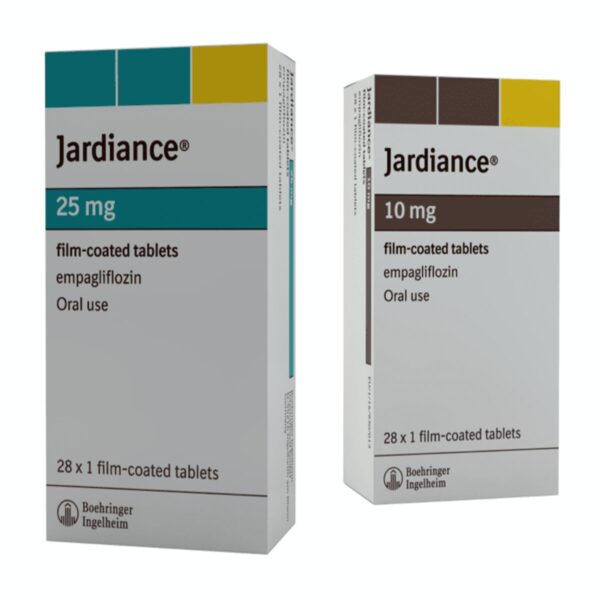
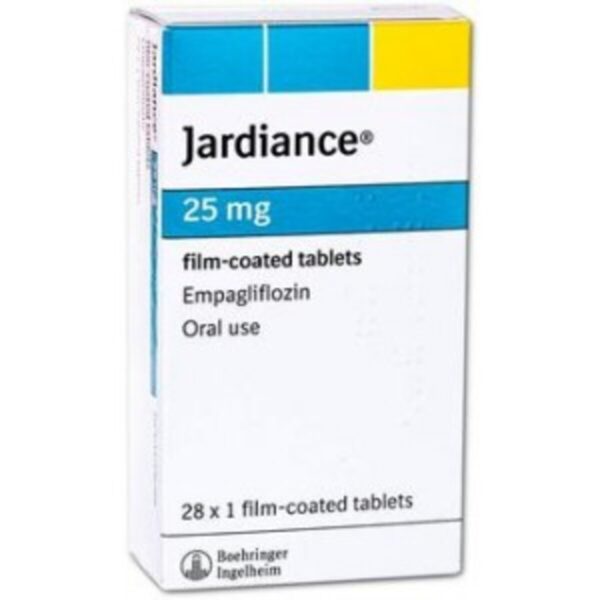

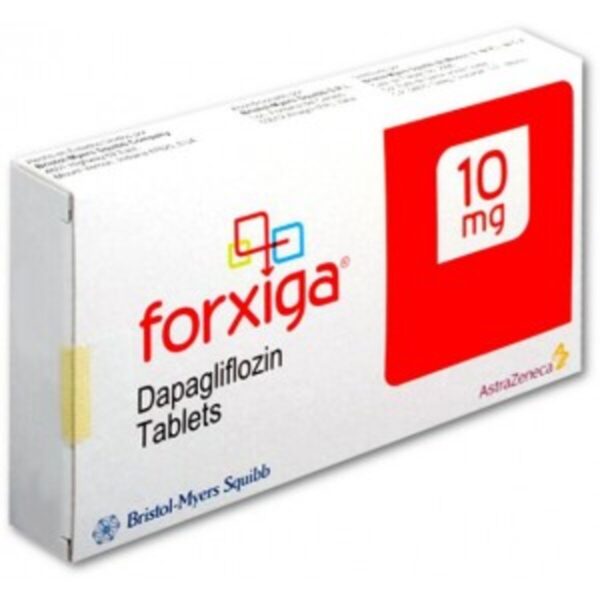
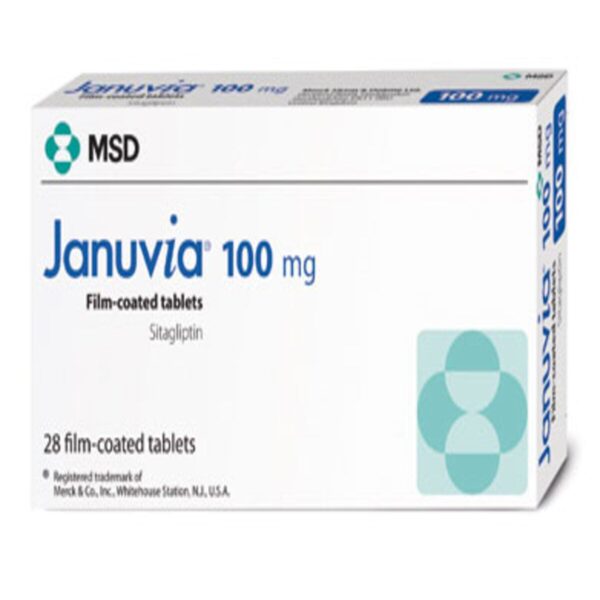














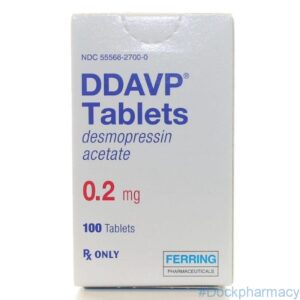


Reviews
There are no reviews yet